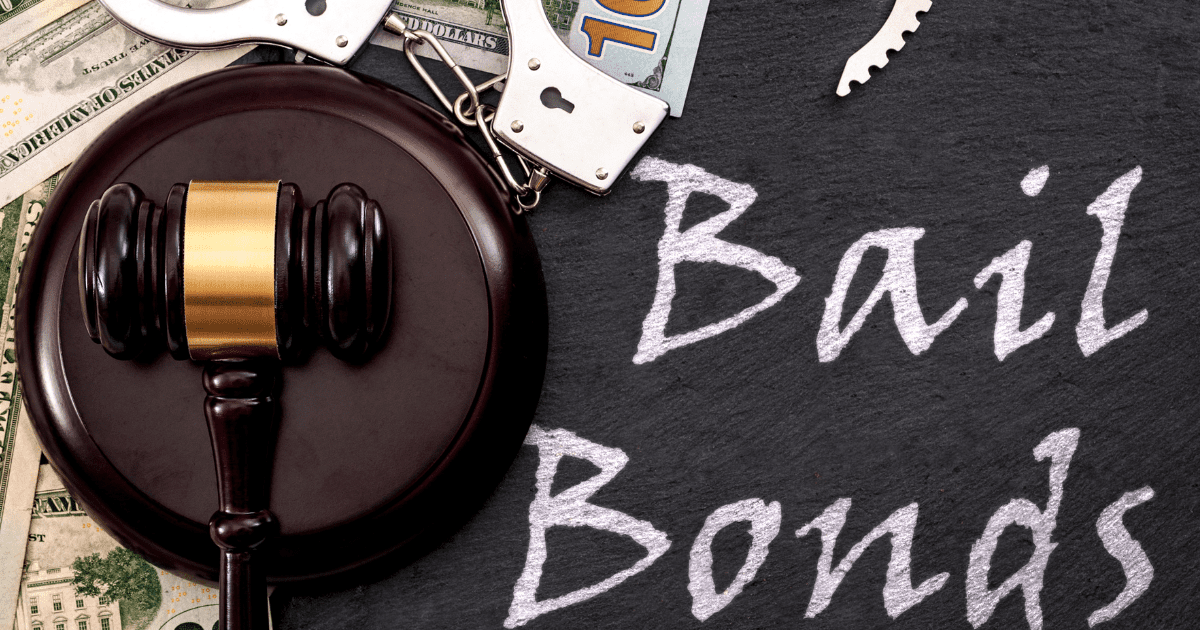What You Ought To Know Prior To Signing a Bail Bonds Agreement
What You Ought To Know Prior To Signing a Bail Bonds Agreement
Blog Article
Just How Bail Bonds Job: A Detailed Summary
Bail bonds play a crucial role in the lawful procedure by providing a system for people to safeguard their release from custodianship while waiting for trial. Understanding the ins and outs of just how bail bonds function, including the functions of courts, bail bondsmen, and the numerous fees involved, can be vital for any person browsing this complex system.
What Are Bail Bonds?
Bail bonds are frequently used in the criminal justice system as an economic warranty that a charged person will appear in court as required. When a person is apprehended, a judge may set a bail amount based on various elements, including the seriousness of the infraction, the accused's criminal background, and the danger of flight. If the implicated can not pay for the bail amount, they may seek the assistance of a bail bondsman.
A bail bond is a contract between the defendant, the bail bondsman, and the court, making certain that the offender will certainly meet their legal responsibilities. In exchange for a fee, typically a percentage of the complete bail amount, the bail bondsman supplies the court with a surety that guarantees the bail. If the accused stops working to appear in court, the bondsman is in charge of paying the complete bail amount to the court, which might lead them to seek the accused for recuperation.
Bail bonds offer to facilitate the release of individuals waiting for test, allowing them to keep their work and household responsibilities while ensuring compliance with court looks. This system is important to balancing the civil liberties of the charged with the rate of interests of public safety and security and judicial stability.
The Bail Process Discussed
After understanding the function of bail bonds in the criminal justice system, it is necessary to detail the bail procedure itself. When an individual is detained and taken into wardship, the bail procedure begins. Adhering to the arrest, the accused is generally brought prior to a judge for a preliminary hearing, where the court will establish whether to give bail and established the amount.
If bail is granted, the accused has numerous options to protect their release. They might pay the full bail quantity in cash, which is returned upon the conclusion of their court commitments. The offender can seek the support of a bond bondsman, that charges a non-refundable fee-- normally a percent of the total bail amount-- to publish bail on their part.
As soon as bail is posted, the accused is released from wardship with the understanding that they should go to all arranged court looks. Falling short to show up can cause the loss of the bail and additional legal consequences. The process wraps up when the situation is solved, whereupon the bail is either returned or preserved by the bondsman as payment for their services.

Types of Bail Bonds
Many alternatives exist when it involves safeguarding a launch from custodianship with bail bonds. Understanding the various types can aid accuseds and their families make notified options.
One of the most common type is the guaranty bond, which involves a third-party bail bondsmansman that guarantees the full bail quantity to the court in exchange for a non-refundable charge, typically around 10% of the bail amount. This option is extensively made use of as a result of its availability for people that might not have the economic methods to pay the complete bail upfront.
An additional type is the money bond, where a co-signer or the offender pays the click here to read overall bail amount in cash money straight to the court. Upon effective completion of the instance, the funds are reimbursed, minus any kind of appropriate costs.

Finally, migration bonds are particularly developed for individuals restrained by migration authorities, facilitating their release while they await legal process. Each sort of bail bond offers distinctive functions, catering to numerous conditions Read More Here and requires within the legal system.
Elements Affecting Bail Costs
Numerous vital factors influence the general expense of bail, identifying just how much an offender or their family might require to pay for release. One of the key variables is the seriousness of the fees. Felony costs normally lead to higher bail amounts compared to offenses because of the perceived risk of flight and the potential effects of the violation.

The accused's financial scenario can likewise impact the bail quantity. Courts might take into consideration an offender's earnings and properties when figuring out bail, possibly causing greater prices for those with better financial resources. Last but not least, the accessibility of security may affect the required payment. If a bond bondsman views a greater threat, they might set a higher premium, more increasing the costs connected with safeguarding a bail bond. Comprehending these variables can aid defendants and their households prepare for the financial implications of protecting bail.
Responsibilities of the Indemnitor
As soon as bail has been secured, the duties of the indemnitor, or the person who agrees to back the bail bond, come into play. The indemnitor Source is mainly in charge of ensuring that the offender goes to all set up court looks. Failure to do so may lead to the loss of the bail bond and prospective legal effects for the indemnitor.
Additionally, the indemnitor is bound to pay back the bail bond business the total of the bond if the accused falls short to show up in court. This includes any expenses or charges incurred by the bail agent in recouping the defendant, which might better intensify the financial burden on the indemnitor.
The indemnitor has to likewise preserve open interaction with both the defendant and the bail bail bondsman, supplying any needed updates connected to the offender's circumstance. It is vital for the indemnitor to remain knowledgeable about the lawful responsibilities and effects connected with the bail bond, as ignorance may cause unexpected responsibilities.
Conclusion
In recap, bail bonds work as a critical system within the criminal justice system, promoting the launch of defendants while ensuring their appearance in court. Recognizing the numerous sorts of bail bonds, the complexities of the bail procedure, and the variables influencing bail expenses is essential for navigating this complex landscape. Additionally, awareness of the duties borne by the indemnitor highlights the relevance of notified decision-making when engaging with bail bond solutions.
Comprehending the details of just how bail bonds work, consisting of the duties of courts, bail bondsmen, and the different charges included, can be necessary for any individual browsing this complicated system.After understanding the function of bail bonds in the criminal justice system, it is crucial to outline the bail procedure itself. The offender can seek the aid of a bond bondsman, that bills a non-refundable fee-- normally a percent of the overall bail amount-- to post bail on their behalf.
If a bond bondsman perceives a greater risk, they might establish a greater costs, more raising the prices connected with securing a bail bond. Comprehending the different kinds of bail bonds, the details of the bail process, and the factors influencing bail costs is essential for navigating this complex landscape.
Report this page